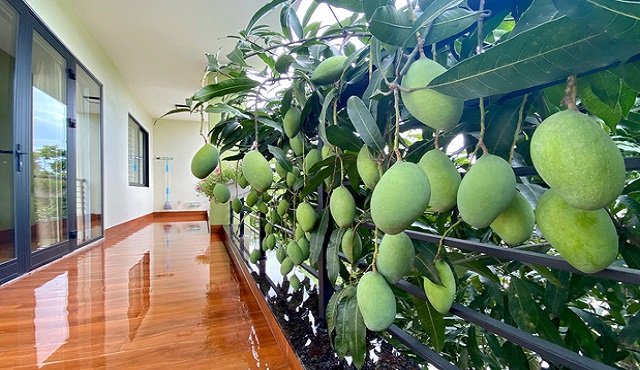Are tree branches that cross a boundary considered trespassing on property lines in Vietnam?
Are tree branches that cross a boundary considered trespassing on property lines in Vietnam? What are the solutions for dealing with circumstances where trees are at risk of collapsing onto an adjoining immoveable property? - Thuy Linh (Kien Giang)

Are tree branches that cross a boundary considered trespassing on property lines in Vietnam? (Internet image)
Regarding this issue, Lawnet would like to answer as follows:
1. Are tree branches that cross a boundary considered trespassing on property lines in Vietnam?
According to Article 175 of the Civil Code 2015, the boundaries between immovable properties in Vietnam are specified as follows:
- The boundaries between adjoining immoveable properties shall be determined in accordance with the agreement of the owners or in accordance with a decision of the competent authority.
The boundaries may also be determined in accordance with customary practice or according to boundaries which have existed for thirty (30) or more years without dispute.
The land user may not encroach upon the boundary or change the boundary markers, including boundaries being canals, irrigation ditches, trenches, gutters or boundaries of rice fields. Each entity must respect and maintain the common boundaries.
- A person having land use rights may use the airspace and the sub-surface according to the vertical dimensions of the boundaries around the land as prescribed by law and may not interfere with the use by other persons of the adjoining land.
A land user may only plant trees and performs other activities within the area covered by its land use rights and according to the defined boundaries. If the roots and branches of trees extend beyond the boundaries, such person must clip and prune the parts of the trees beyond the boundaries, except as otherwise agreed.
Thus, If the roots and branches of trees extend beyond the boundaries, such person must clip and prune the parts of the trees beyond the boundaries, except as otherwise agreed.
If there is a request to prune tree branches beyond the boundary and the property owner does not comply with the above regulations, it is considered a violation of the property boundary.
2. Regulations on boundary markers separating immovable propertyin Vietnam
- An owner of adjoining immoveable property may only erect boundary stakes and fences and build separating walls on the area covered by its land use rights.
- Adjoining land users may agree to the erection of boundary stakes and fences, the building of separating walls and the planting of trees on the boundary for use as boundary markers between the immoveable properties, and the boundary markers shall be under the multiple ownership of such persons.
Where a boundary marker is erected on the boundary by only one party with the consent of the owner of the adjoining immoveable property, such boundary marker shall be multiple ownership property and the construction expenses shall be borne by the party having erected the marker, unless otherwise agreed.
If the owner of the adjoining immoveable property does not give consent and has legitimate reason, the owner having erected the boundary stake or fence or built the separating wall must remove it.
- With respect to boundary markers which are common house walls, the owner of the adjoining immoveable property may not cut out a window or air ventilating hole or drill the wall in order to install building structures, except with the consent of the owner of the adjoining property.
Where houses are separately built, but with adjoining walls, an owner may only drill and install building structures up to the space between the adjoining walls.
With respect to trees which are common boundary markers, the parties have equal obligations to protect the trees, and the fruits from the trees shall be distributed equally, unless otherwise agreed.
(Article 176 of the Civil Code 2015)
3. What are the solutions for dealing with circumstances where trees are at risk of collapsing onto an adjoining immoveable property?
In case trees or structures are at risk of causing damage, the solution should be as follows:
- Where there is a danger that a tree or a construction will collapse onto an adjoining immoveable property, the owner must cut down the tree or repair or demolish the construction at the request of the owners of adjoining immovable property or a competent authority.
If such person does not cut down the tree or demolish the construction, the owner of an a
djoining immoveable property may request a competent authority to procure that the tree be cut down or the structure be demolished. The expenses for cutting down the tree or demolishing the construction shall be borne by the owner of the tree or the structure.
(Clause 1, Article 177 of the Civil Code 2015)
Nguyen Ngoc Que Anh
- Cases of land rent exemption and reduction under the latest regulations in Vietnam
- Economic infrastructure and social infrastructure system in Thu Duc City, Ho Chi Minh City
- Regulations on ordination with foreign elements in religious organizations in Vietnam
- Increase land compensation prices in Vietnam from January 1, 2026
- Determination of land compensation levels for damage during land requisition process in Vietnam
- Who is permitted to purchase social housing according to latest regulations in Vietnam?
-

- Emergency response and search and rescue organizations ...
- 10:29, 11/09/2024
-

- Handling of the acceptance results of ministerial ...
- 09:30, 11/09/2024
-

- Guidance on unexploded ordnance investigation ...
- 18:30, 09/09/2024
-

- Sources of the National database on construction ...
- 16:37, 09/09/2024
-

- General regulations on the implementation of administrative ...
- 11:30, 09/09/2024
-

- Notable new policies of Vietnam effective as of ...
- 16:26, 11/04/2025
-
.Medium.png)
- Notable documents of Vietnam in the previous week ...
- 16:21, 11/04/2025
-
.Medium.png)
- Notable documents of Vietnam in the previous week ...
- 16:11, 02/04/2025
-
.Medium.png)
- Notable new policies of Vietnam to be effective ...
- 16:04, 02/04/2025
-
.Medium.png)
- Notable new policies of Vietnam effective from ...
- 14:51, 21/03/2025
 Article table of contents
Article table of contents
